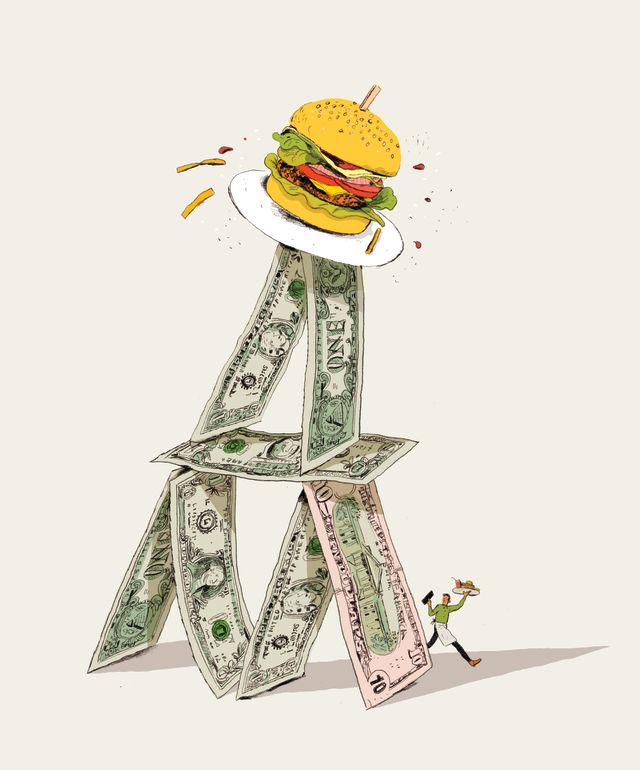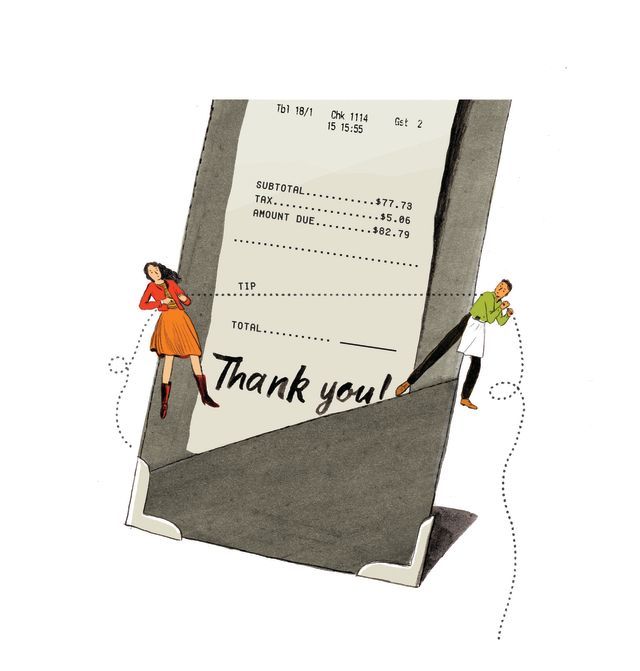The No-Tipping Point: Local Restaurateurs Consider a New System

Image: Peter Oumansky
When legendary restaurateur Danny Meyer announced last fall that all 13 of his New York City dining rooms—including such well-known venues as Gramercy Tavern and The Modern—would begin to phase in a no-tipping policy, it was a shot heard ’round the food world. Soon after, restaurants in cities such as Los Angeles, Seattle, Portland, and Honolulu started to embrace the idea of adding a fixed service charge or simply incorporating that charge into menu prices. So will Aspen join the move to what Meyer calls “hospitality included” anytime soon?
“I feel we are pretty far behind what’s happening at Danny Meyer’s and other New York restaurants,” says Barclay Dodge, the veteran Aspen chef whose latest venture, Bosq, will open in town this summer.
That said, a number of high-profile local restaurants are seriously considering the elimination of tipping. Foremost among them are Jimmy’s and Jimmy’s Bodega, whose owner, Jimmy Yeager, calls the move “inevitable.” He adds, “At some point everyone will be forced to make this change.”
Yeager has spent considerable time in New York discussing the issue with Meyer’s team. “The fact that the service staff is currently paid directly by the customer and everyone else is paid by the restaurant is neither a productive nor an efficient business model,” he says. “But I am hesitant and keep moving the start date.”
Two powerful forces are acting to bring the no-tipping issue to a head. First, while tips at most fine-dining restaurants are almost always pooled among the waitstaff, it’s actually illegal to allocate them to other employees, such as line cooks. At the same time, very low wages and a severe housing crunch in places like New York City (and, ahem, the Roaring Fork Valley) are making it difficult to find cooks and other so-called back-of-the-house employees.
“The biggest issue we face as chefs is providing a reasonable opportunity to make a living wage in the kitchen,” says Mark Fischer, who runs the acclaimed downvalley restaurants Town, Phat Thai, and the Pullman.
Every restaurateur we spoke to would be happy to see the current setup get the heave-ho. “Because Aspen is an international resort, many guests are unaccustomed to our system of tipping,” says Yeager. “Some of this is authentically uninformed, some of it is willfully ignorant, and some is rebellion against a system that many visitors refuse to participate in. Regardless of the motive, the results are the same for the staff: demoralizing.”
Though he admits he is far from pulling the trigger on a no-tipping policy, Fischer recognizes the idea’s viability. “By eliminating that archaic tipping model and replacing it with, say, a 20 percent service charge or rolling something similar into menu prices themselves, we’d be permitted to allocate pay more evenly,” he notes. “The magic here is that the total cost you pay won’t differ much from what you pay now, and we’d be able to compensate all of our employees equitably.”
Adds Dodge, “I feel a restaurateur in Aspen could attract a top staff based on overall job quality rather than just the size of their tip.”
Which isn’t to say there are no notes of caution. “My biggest concern is that customers will not realize the menu price increase doesn’t mean a higher bill for them,” says Jonathan Pullis, CEO of Aspen’s Chefs Club by Food & Wine.

But Aspen’s clientele may be ready to accept a change. Yeager reports that after interviewing his regular customers, he found they liked the idea of either adding a service charge or increasing prices to eliminate tipping. “Creating a revenue-sharing system is not about redistributing the income from the front of the house to the back of the house,” he says. “It means that everyone benefits from being a partner in the health and growth of the business; that’s our goal. Being an early adopter is the right thing to do for my business, meaning my employees.”
Bottom line: don’t be surprised if the policy at some Aspen restaurants changes before the aspens turn gold this fall. Consider that a hot tip.













































